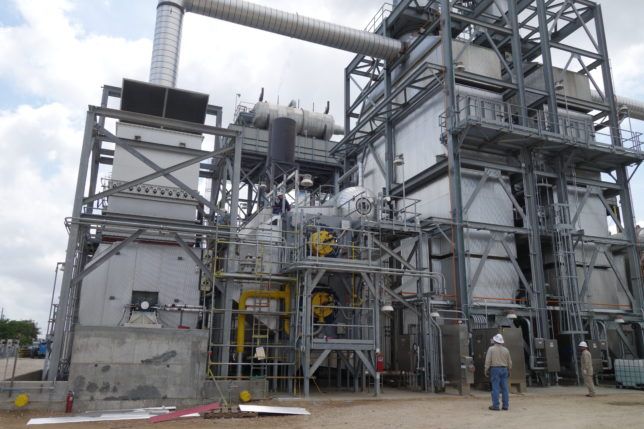BOILERS IN TURBOMACHINERY

Gerardo Lara, Vice President of Fire Boiler Sales, at Rentech Boiler Systems, discusses the impact of lower oil prices, how the boiler market is adapting to the need for fast-start power plants, and how coal plant closures have impacted orders.
What trends have you observed related to turbomachinery?
There has been some slowdown in our gas turbine (GT) business over the last few years. This could be attributed to the price of oil, as well as the changing political climate. As a result, orders for heat recovery steam generators (HRSGs) have been soft. The size of boilers ordered hasn’t particularly changed, but the order frequency is more scattered.
How are coal plant closures impacting your business?
Coal plant closures have indirectly helped us as we do not provide coal-type boilers. Instead, we focus on natural gas-fired units and diesel-fired units. We have had at least three projects that were the result of the new boiler MACT regulations impacting the viability of coal units. This stiffening of environmental regulations has led to the decommissioning of coal facilities and their replacement with natural gas.
What products do you provide for power plants?
We primarily offer auxiliary boilers. These units are used for GT and steam turbines (ST). We can meet customer specifications, but our standards are typically more conservative than the usual boiler manufacturer. We do that so the customer is supplied with equipment that is robust and stable in operation. Provided that water treatment is performed correctly, it will function as intended.
What factors are important in boiler sizing?
Furnace sizing and steam drum sizing both play a role. A larger furnace size gives better flame accommodation. This, in turn, makes it easier to make emissions targets, while not overheating the heat transfer surfaces (which could lead to tube burning and other maintenance headaches).
Proper steam drum sizing lets you ramp the boiler up and down more easily. With enough water in the drum, you gain flexibility and can react faster to generation needs. The steam drum, in effect, becomes a larger capacitor or water reservoir.
What else can you say about your own boiler design?
Our typical packaged boiler design has a furnace of metallic construction with refractory free wall seals. This reduces the chance of leaks and hot spots. It also provides a heat exchanger with high reliability. We can either build the entire boiler in our factory or provide modules to be assembled on site. For power plants, the latter option is rarely required due to the size of the units.
How are changes to the generation profile affecting boiler designs?
These days, most new plants want quick-start capability. They are also being built to endure far more starts and stops. We have plenty of experience in engineering systems that can be on hot standby for quick starts. We can either put a steam heater at the bottom of the boiler to keep it ready, or we install an undersized burner which keeps the boiler warm and ready to go.
How else is the market changing?
We are working more closely with integrators such as Engineering, Procurement and Construction firms (EPCs). In the past, EPCs may have ordered a deaerator, feedwater pumps and blowdown tanks from different suppliers and then assembled the pieces on site.
These days, EPCs have learned to execute better and they generally bring us in earlier in the process. They are demanding boiler packages with the deaerator, feedwater pumps and blowdown tanks includes on skids, and fully integrated with the auxiliary boilers. This allows them to install everything more rapidly, cuts down greatly on expensive onsite labor costs and simplifies commissioning.
What else would you like to add?
An 800 MW combined cycle power plant with a couple of gas turbines, a steam turbine and an HRSG might come with a price tag of more than a billion dollars. The boiler itself represents a tiny fraction of the overall cost, perhaps $2 million. Yet if that boiler is not reliable, it can bring a $3 billion plant to a halt or prevent it from starting. Thus, a boiler must be chosen with care as it can be the weakest link in the plant if not purchased from a reputable manufacturer.
